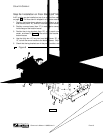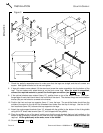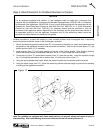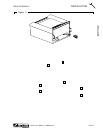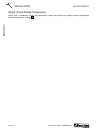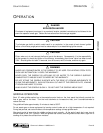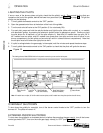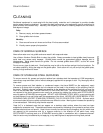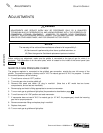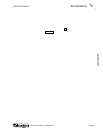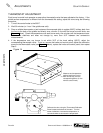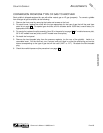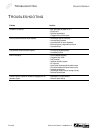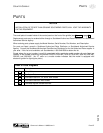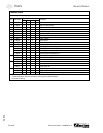
COUNTER GRIDDLE CLEANING
OPERATOR’S MANUAL 1182629 REV 2PAGE 21
CLEANING
CLEANING
Southbend equipment is constructed with the best quality materials and is designed to provide durable
service when properly maintained. To expect the best performance, your equipment must be maintained in
good condition and cleaned daily. Naturally, the frequency and extent of cleaning depends on the amount
and degree of usage.
Daily:
A. Remove, empty, and clean grease drawers.
B. Clean griddle drain chutes.
Monthly:
A. Clean around burner air mixers and orifices if lint has accumulated.
B. Visually assure proper pilot operation.
CARE OF GRIDDLE SURFACE
Never allow water on a hot griddle and never wash it with soap and water.
Use a Norton Alundum Griddle Brick to clean the griddle. Always remember to heat griddle slowly because
quick heat may cause costly damage. Griddle plates cannot be guaranteed against damage due to
carelessness. Never place utensils on griddle. Do not overheat griddle above 550°F, as this will cause
warpage or breakage.
Do not use any type of steel wool. Small particles may be left on the surface and get into food products. Do
not clean spatula by hitting the edge on the griddle plate. Such action will only cut and pit the griddle plate,
leaving it rough and hard to clean.
CARE OF STAINLESS STEEL SURFACES
To remove normal dirt, grease and product residue from stainless steel that operates at LOW temperature,
use ordinary soap and water (with or without detergent) applied with a sponge or cloth. Dry thoroughly with a
clean cloth.
To remove grease and food splatter, or condensed vapors, that have BAKED on the equipment, apply
cleanser to a damp cloth or sponge and rub cleanser on the metal in the direction of the polishing lines on
the metal. Rubbing cleanser, as gently as possible, in the direction of the polished lines will not mar the
finish of the stainless steel. NEVER RUB WITH A CIRCULAR MOTION. Soil and burnt deposits which do
not respond to the above procedure can usually be removed by rubbing the surface with SCOTCH-BRITE
scouring pads or STAINLESS scouring pads. DO NOT USE ORDINARY STEEL WOOL, as any particles left
on the surface will rust and further spoil the appearance of the finish. NEVER USE A WIRE BRUSH, STEEL
SCOURING PADS (EXCEPT STAINLESS), SCRAPER, FILE OR OTHER STEEL TOOLS. Surfaces which
are marred collect dirt more rapidly and become more difficult to clean. Marring also increases the possibility
of corrosive attack. Refinishing may then be required.
“Heat tint” is a darkened area that can appear on a stainless steel surface where the area has been
subjected to excessive heat. These darkened areas are caused by thickening of the protective surface of the
stainless steel and are not harmful. Heat tint can normally be removed by the foregoing, but tint which does
not respond to this procedure calls for a vigorous scouring in the direction of the polish lines, using
SCOTCH-BRITE scouring pads or a STAINLESS scouring pad in combination with a powered cleanser.
Heat tint action may be lessened by not applying, or by reducing heat to equipment during slack periods.



